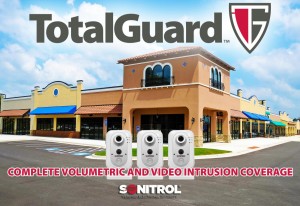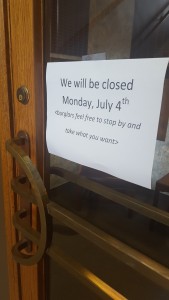It’s three a.m. You are sound asleep, dreaming about that beach vacation you’re planning. Your toes are in the sand, the waves are gently lapping against the shore, when all of a sudden, an earthquake hits! Wait, it’s not an earthquake. It’s your cellphone buzzing across your nightstand. Why is my phone ringing at three a.m.? I was having the best dream!
No one wants to get that call. If you are a Sonitrol customer, you could be on the receiving end of one of those calls from our Central Station operators. Why? Has there been a break-in at your business? Maybe not. Often times, it’s not your usual suspect. A criminal hasn’t triggered the alarm at your facility. The culprit? An unsecured door, blown open by a summer storm or a gust of wind. Yep. A door.
But doors are great, right? They help protect the people who should be there and keep the noise, weather, unauthorized people, and zombies out. And with a Sonitrol security system at your business or residence, you’ve really added protection to your property, valuables, and loved ones. We’ve installed door contacts so that when your system is armed and a door is opened, our monitoring team will dispatch police.
How do the door contacts work?
A door contact has two components. First, there is the switch part that is attached to the doorframe. It can be wirelessly powered with a battery or wired directly to the security panel. The second part of the contact is a magnet. The two components need to meet up when the door is closed to let the control panel know that the door is shut. The standard allowable gap between the contact and magnet before it goes into alarm is ¾ of an inch. Once the magnet is farther than ¾ of an inch, the alarm point is considered open, and if the system is armed, our operators will be notified.
So how could a door cause a false alarm?
Sometimes, buildings settle, doors become misaligned, screws in hinges become loose, and doors and doorframes swell and shrink with changing seasons. It may sound as unlikely as a zombie knocking down your door, but it’s a common cause of false alarms.
So, what can you do?
- Make sure all of your doors close properly. Can you pull the door open without turning the doorknob? Is there play in the door? When you pull on the handle, is it tight? Or does it wiggle and move?
- Check the door hinges. The hinges should be checked to make sure screws have not loosened and the strike plate on the frame is installed properly and not damaged. Make sure the latch on the door is contacting the strike plate on the doorframe.
- Check the door contact on occasion. Over time, the contact and the magnet can become misaligned or components can become damaged. Are both components of the door contact mounted properly and meeting when the door is closed?
Checking to make sure your doors are closed and secure and fixing older doors will help ensure that your building is protected when you arm the security system. It can increase police safety, too. Police safety? You bet. Avoiding these false alarms keeps our police from rushing across town when it isn’t necessary. On a windy night, or when a summer storm might be rolling in, that extra few minutes to check your doors could help make sure you enjoy those beach vacation dreams and don’t get a three a.m. wake-up call!
























